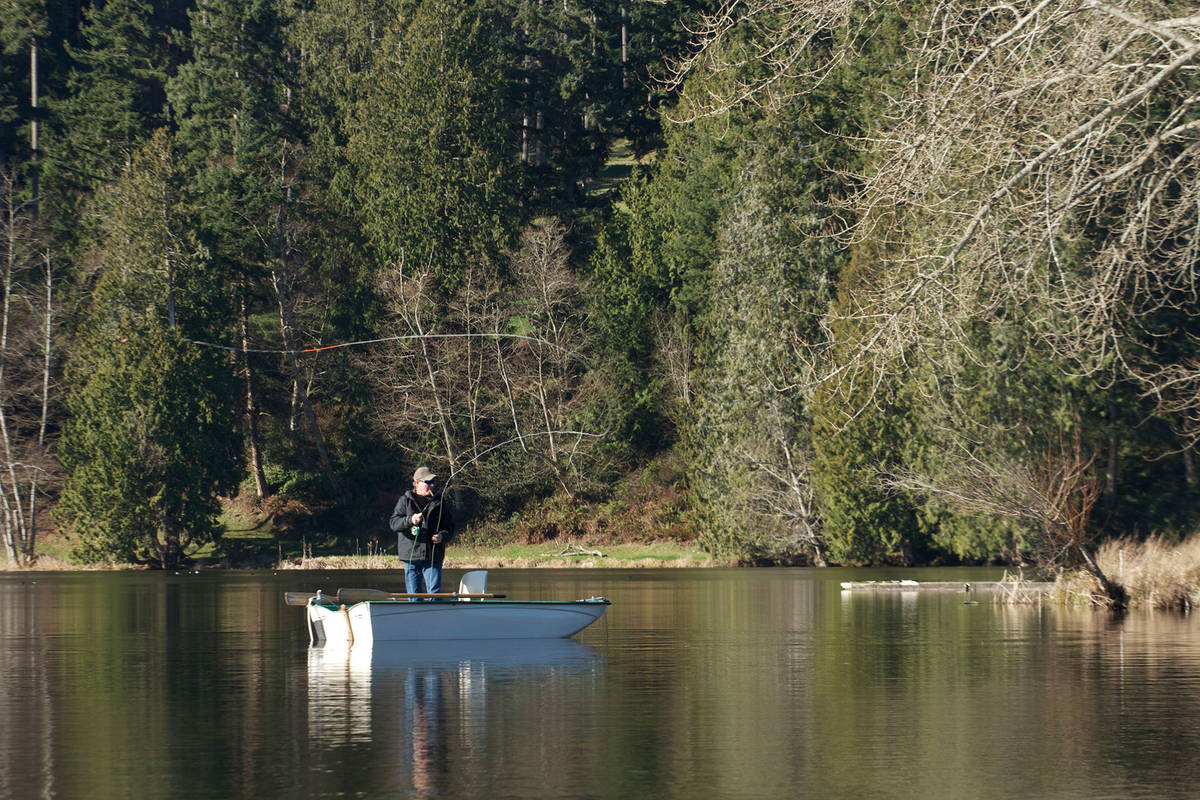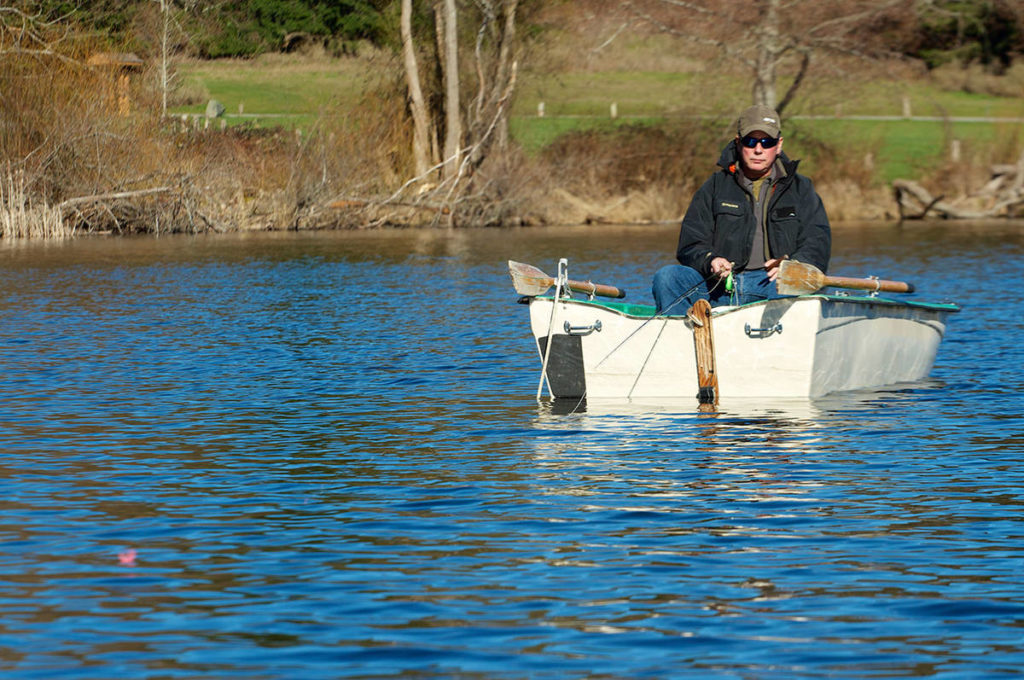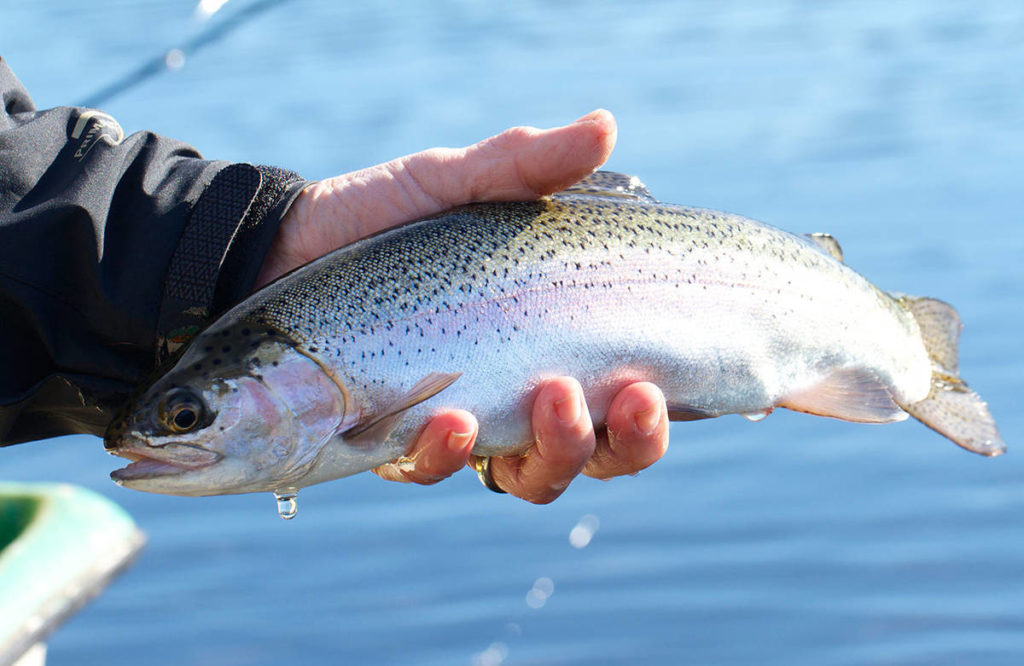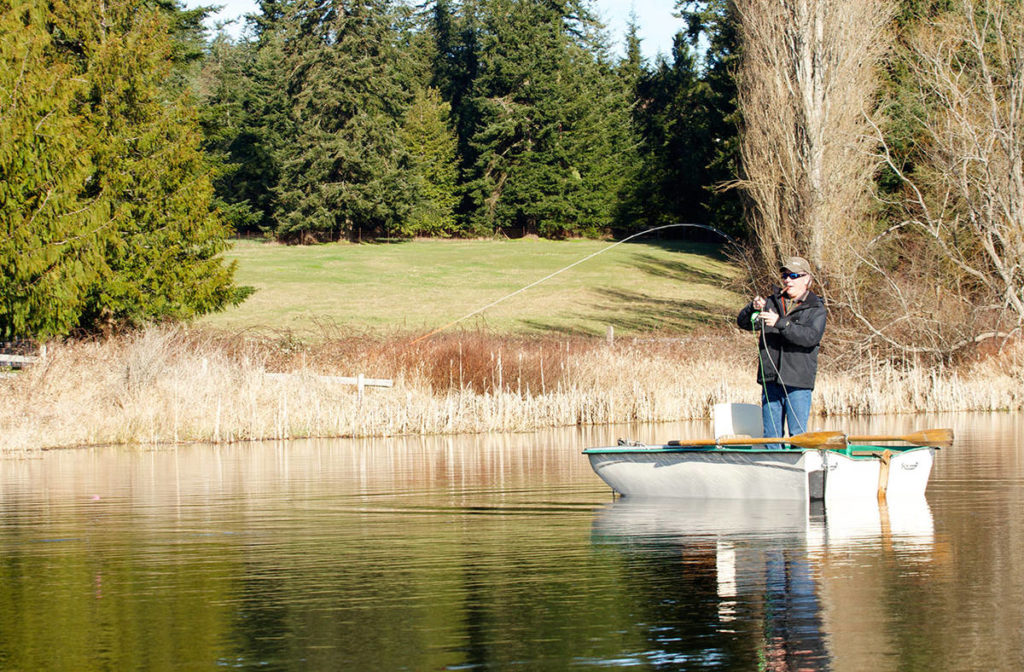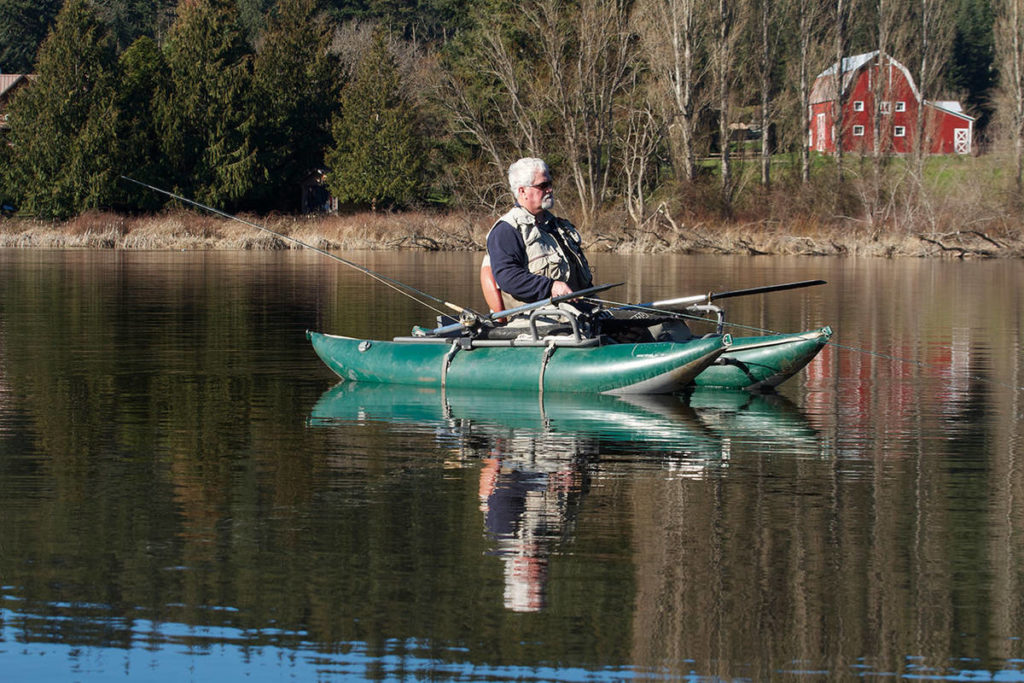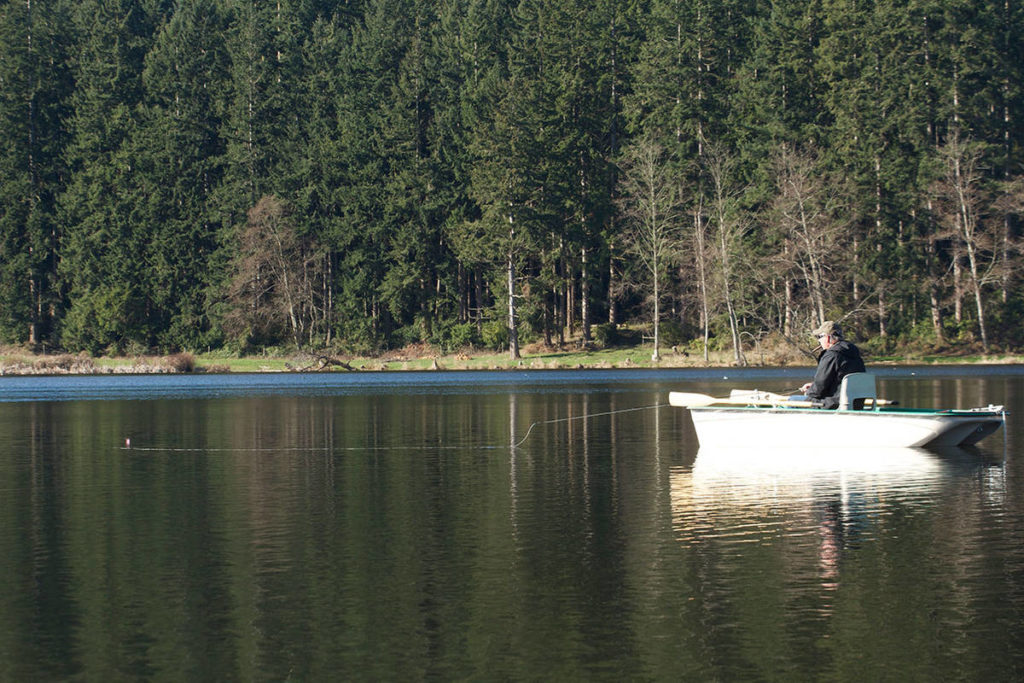By Mike Benbow / Special to The Herald
WHIDBEY ISLAND — Back in the 1990s, Lone Lake on Whidbey Island produced nice trout that mostly were caught and taken home every year by a small number of anglers who fished the 101-acre lake.
“I couldn’t help wondering how big the fish would get if Lone was a selective (regulations) fishery,” said Dale Dennis of Arlington, then the Conservation Committee chairman for the Evergreen Fly Fishing Club in Everett.
In 1997, Dennis worked with the state to have the regulations changed so that anglers couldn’t use bait, needed to use flies or lures with a single, barbless hook and could keep only one fish a day that was at least 18 inches in length.
The new rules worked, partly because the lake had a high nutrient count that produced a large number of insects for fish food. But it also produced significant weed growth that made boating difficult, so officials put a number of sterile grass carp into the lake to eat the weeds.
The carp have done their job too well and have essentially denuded the lake of weed growth other than algae, cutting back on the number and types of insects. But the lake has continued to have good numbers of Daphnia, tiny planktonic crustaceans that are available year-round and seem to sustain the fish quite well.
In recent years, the fish in Lone have averaged 15 to 18 inches in length and a few have grown to 20 inches and more. The lake suffered a lack of oxygen and a fish kill recently, but the problems have been fixed and the fishery is recovering well.
Lone remains one of the few fisheries in the region with special regulations and larger fish, and it’s location on southern Whidbey Island near the community of Bayview — which requires a ferry ride for many anglers — keeps the lake from being overrun.
It’s a good lake for fall fishing because many people are focused on hunting, so crowds are even less likely.
Jerry Buron tries to fish Lone at least one day each week unless the weather is too windy or too rainy. The lake is open year-round, so Buron’s trips usually stop only when the water gets too hot in the summer.
Buron likes Lone because it doesn’t get the crowds that visit Pass Lake, a selective-rules fishery in Skagit County that produces bigger fish. He also finds it calmer and quieter, noting that his enjoyment of a fishing trip involves more than just the number or size of the fish he catches.
Pass Lake, which is located along a major highway, is too noisy and too busy, Buron said. “I never have trouble finding parking at Lone,” he added.
Buron, of Marysville, is among many of the fly fishers who live off the island and enjoy fishing the lake.
On a recent trip he said he landed and released 10 fish, most of them around 12 to 13 inches long that were planted in the lake last spring.
His favorite fly was a small black leech with a fluorescent orange bead fished under a strike indicator about 5 to 6 feet down. He said the bead is easy to see in the water and appears to attract the fish. Others have done well fishing small chironomids, say a size 18, at similar depths.
Still others say there can be some good insect hatches in Lone in October and they can do pretty well on dry flies fished on the surface if they see insects hatching.
Either way, Lone can be a good lake to fish in the fall. It’s also a place to watch through the winter because it often picks up in February if there are a few warm, sunny days that can encourage an insect hatch.
Talk to us
> Give us your news tips.
> Send us a letter to the editor.
> More Herald contact information.
